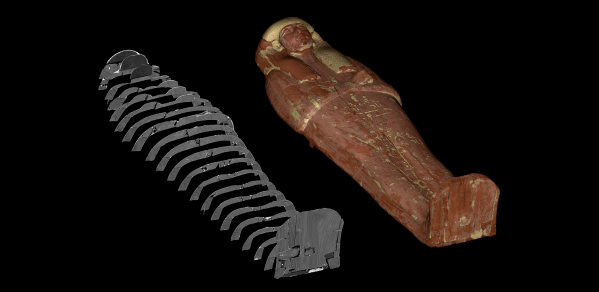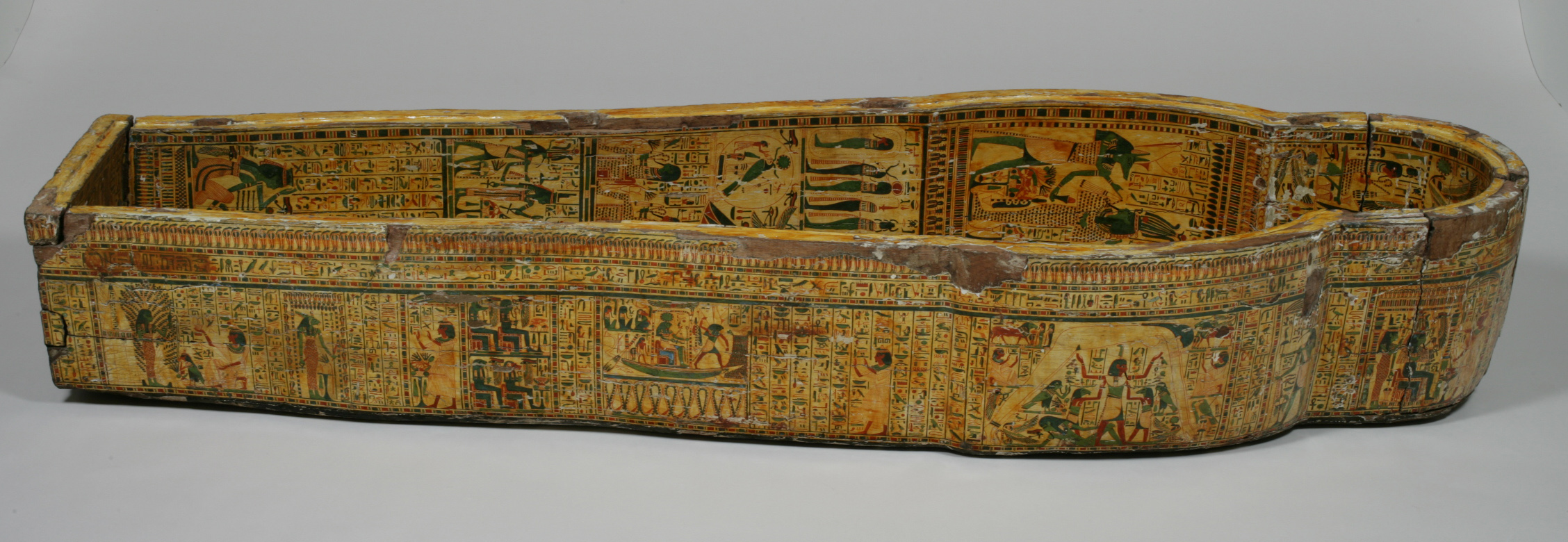
A Department of Engineering researcher used medical imaging techniques to discover the secrets behind Egyptian artefacts in the Fitzwilliam Museum’s new ‘Death on the Nile’ exhibition.
Being able to visualize the inner craftsmanship and construction of these wooden coffins can help provide Egyptologists with valuable insights into the work practices and customs of the time.
Tom Turmezei
The exhibition, which opened on 23 February, explores how coffin design developed over 4,000 years of Egyptian history. To better understand their construction, the Museum contacted Dr Tom Turmezei of the Medical Imaging Group, part of the Machine Intelligence Laboratory. He looked at the coffins of Nespawershefyt and Nakhtefmut, both important officials at the temple of Amun-Re at Karnak; the former, circa 1000 BC, a supervisor of temple scribes and of craftsmen’s workshops, and the latter circa 923 BC, responsible for opening the doors of the shrine that contained the figure of Amun-Re in the innermost sanctuary of the temple.
Visual inspection of the coffins can only tell so much. Working with the Department of Radiology at Addenbrooke’s Hospital, where he is also an honorary consultant radiologist, Tom helped subject the coffins to computerised tomography (CT) scanning – a technique that uses X-rays to compile a set of cross-sectional images of an object which can be rendered into a 3D model of the insides. This enabled Tom to effectively see within the coffins and get a sense of their internal structures.
“Being able to visualize the inner craftsmanship and construction of these wooden coffins can help provide Egyptologists with valuable insights into the work practices and customs of the time,” Tom said. “We already knew that a lot of wood was recycled for these coffins because of its scarcity, but we now also know a little bit more of just exactly how this was done. Hopefully the imaging also provides an exciting visual medium for the public to appreciate and explore these remarkable artefacts from their inside, in addition to their stunning surface detail.”
 Full length view of coffin from the coffin set of Nespawershefyt
Full length view of coffin from the coffin set of Nespawershefyt
©The Fitzwilliam Museum, Cambridge
The same techniques were previously used by Dr Turmezei to see inside 18th- and 19th-century artists’ mannequins for another exhibition at the Fitzwilliam called ‘Silent Partners.’
Tom will be joined by Julie Dawson, Head of Conservation at the Fitzwilliam, for a talk on 13 April titled ‘The coffin of Nespawershefyt: An ancient case for CT scanning’.
Photo gallery: the coffins of Nespawershefyt and Nakhtefmut


